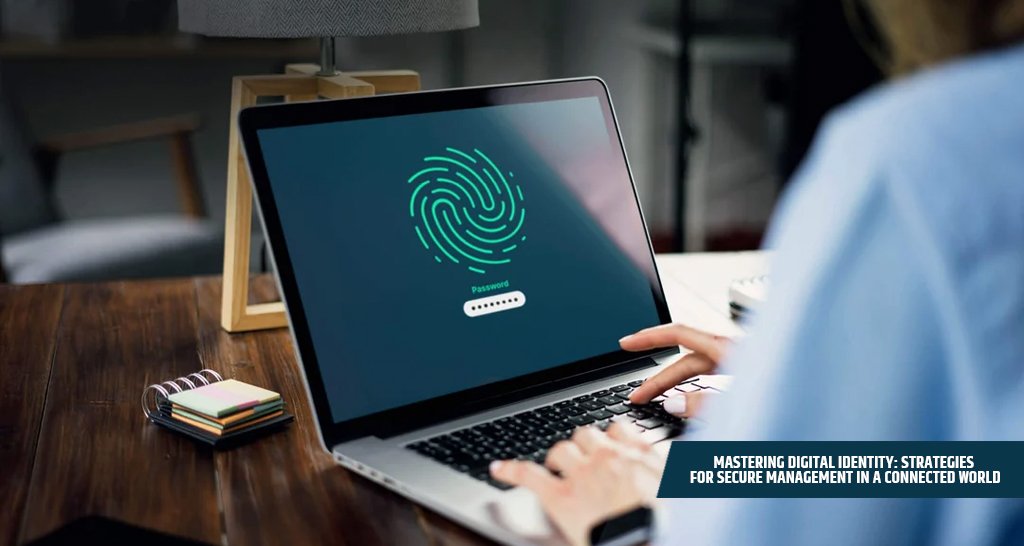Introduction to Digital Identity
In the contemporary digital landscape, the concept of digital identity has emerged as a fundamental element for individuals and organizations alike. Digital identity can be defined as the online representation of a person or entity, comprised of personal information, online behaviors, and interactions across various digital platforms and services. This form of identity encapsulates not only usernames and passwords but also broader details such as social media activity, online transactions, and user-generated content. Each aspect contributes to how individuals and institutions are perceived within the digital realm.
The significance of digital identity extends beyond mere representation; it serves as an essential asset in the connected world. It influences various dimensions of daily life, including professional engagements, social interactions, and access to services. For businesses, a solid digital identity enhances brand recognition, builds customer trust, and facilitates effective communication with clients. For individuals, a well-managed digital identity can open doors to opportunities, enhance social connections, and provide access to information and services. Conversely, a compromised or poorly managed digital identity can lead to challenges such as identity theft, reputational damage, and loss of access to vital services.
As the prevalence of online platforms continues to expand, understanding the formation of digital identity becomes increasingly pertinent. This formation occurs through everyday online activities, including social media interactions, online purchases, and participation in forums. Each action contributes to the accumulation of data that constructs an individual’s or organization’s digital footprint. In recognizing the impact of digital identity, stakeholders are urged to prioritize its management, ensuring that it reflects authenticity and enhances security within the digital ecosystem. As a result, navigating the complexities of digital identity has become imperative for success in the modern world.
Importance of Digital Identity Management
In today’s highly connected world, the significance of digital identity management cannot be overstated. With the rapid evolution of technology and the increasing presence of online interactions, ensuring the security and integrity of digital identities has become paramount for both individuals and organizations. A poorly managed digital identity can lead to severe consequences, including data breaches and identity theft, which can have detrimental effects on financial security and personal reputation.
Data breaches, wherein unauthorized individuals gain access to sensitive information, are often a direct result of inadequate digital identity management practices. These breaches can expose personal data, such as Social Security numbers, financial account details, and confidential corporate information. Once compromised, this data can be exploited, leading to identity theft and financial loss. The aftermath of such incidents necessitates extensive recovery efforts, including credit monitoring and identity restoration services, which further illustrate the importance of proactive management of digital identities.
Moreover, organizations face significant risks as well. Ineffective digital identity management can erode customer trust and tarnish brand reputation. When clients feel that their personal information is not adequately protected, they may reconsider their relationship with the organization. Cybersecurity incidents stemming from poor identity management practices can also result in legal implications and financial penalties, adding another layer of urgency to the need for robust identity management frameworks.
As our reliance on digital systems grows, it is essential for both individuals and organizations to adopt effective digital identity management strategies. This can include implementing multifactor authentication, regularly updating passwords, and educating employees about potential cyber threats. By fostering a culture of digital security and awareness, stakeholders can contribute to the safeguarding of their digital assets and mitigate the risks associated with poor identity management.
Components of Digital Identity
In the rapidly evolving digital landscape, understanding the components of digital identity is essential for individuals and organizations alike. A digital identity comprises various elements that together create an individual’s or entity’s online persona. The first primary component of digital identity is personal information, which includes details such as name, address, date of birth, and contact information. This foundational data forms the basis of one’s digital presence and is often used for authentication purposes across various online platforms.
Online behaviors constitute another critical component of digital identity. This includes the choices individuals make while navigating the internet, such as websites visited, transactions made, and content interacted with. Such behaviors contribute to a layered understanding of an individual, allowing businesses and organizations to refine their engagement strategies based on user preferences and habits. Furthermore, this behavioral data can assist in improving user experience by providing tailored recommendations and relevant advertisements.
Social media activity is also a significant aspect of digital identity. The content individuals share, the interactions they engage in, and the networks they build all contribute to their online persona. Social media platforms collect and analyze this activity to shape user profiles, which can be leveraged for targeted marketing or public relations efforts. Furthermore, it reflects an individual’s interests, affiliations, and even influences their reputation within various communities.
Finally, biometric data, such as fingerprints, facial recognition, and voice patterns, represents a more secure and unique component of digital identity. As this technology advances, many organizations are utilizing biometric identifiers for enhanced security measures, reducing the risk of identity theft or unauthorized access to sensitive information. Collectively, these components of digital identity form a comprehensive digital footprint, significantly influencing how individuals are perceived and interact in a connected world.
Technologies Enabling Digital Identity Management
Digital identity management is a critical component in today’s connected world, driven by advancements in various technologies that enhance security and streamline user experiences. One of the primary technologies enabling efficient digital identity management is identity verification systems. These systems utilize advanced techniques such as biometric recognition, facial recognition, and document scanning to confirm an individual’s identity. By automating the verification process, these technologies minimize the risk of identity theft and fraud while ensuring that users can access services quickly and securely.
Additionally, decentralized identity systems offer an innovative approach to digital identity management. Unlike traditional models that rely on centralized databases prone to breaches, decentralized systems empower users with control over their identities. Utilizing self-sovereign identity (SSI), individuals can manage their personal data without relying on a central authority. This technology relies on cryptographic methods to ensure that users can prove their identity while keeping personal information private and secure. The ability to selectively share information is a significant benefit, enhancing user privacy and creating a more trustworthy digital interaction.
Furthermore, blockchain technology is set to revolutionize digital identity management by introducing a transparent and immutable method for recording identity transactions. Each entry on the blockchain is securely linked and cannot be altered retroactively, making it an ideal solution for storing identity information. Smart contracts can automate various processes, ensuring that identity verification and authorization occur without delays. As organizations increasingly adopt blockchain for identity management, they can reduce the likelihood of identity fraud while fostering transparency and security in digital identity transactions.
Collectively, these technologies represent a significant shift in how digital identities are managed. By improving security through identity verification, embracing decentralized systems, and leveraging blockchain technology, users can navigate the digital landscape with greater confidence and control over their personal information.
Challenges in Digital Identity Management
Digital identity management has become a critical component of personal and organizational security in today’s interconnected world. However, several challenges impede the efficient and secure management of digital identities. One of the most pressing challenges is the evolving landscape of cyber threats. As technology advances, so do the methods employed by cybercriminals to steal or misuse digital identities. Phishing attacks, credential stuffing, and ransomware are just a few of the tactics that can compromise user accounts and sensitive information. Organizations must be vigilant and proactive in their strategies to mitigate these risks while constantly updating their defenses.
Another significant challenge in digital identity management relates to regulatory compliance. Governments around the globe are enacting strict regulations concerning data protection and privacy, such as the General Data Protection Regulation (GDPR) in the European Union. Digital identity management systems must comply with these regulations, which often require organizations to implement complex processes for data handling, storage, and consent. Failure to comply can lead to severe penalties and loss of customer trust, thereby emphasizing the necessity for robust strategies that not only avoid legal repercussions but also foster a culture of transparency and accountability.
Moreover, user privacy concerns have gained prominence amid growing awareness among individuals regarding how their data is used and shared. Users are increasingly demanding more control over their digital identities, including how their information is collected, processed, and used. Organizations must navigate this landscape carefully, balancing effective identity management with the need for user consent and privacy. As digital identity management continues to evolve, it is crucial for entities to stay informed about emerging threats and solutions that can ensure safe and compliant management of digital identities, protecting both users and organizational interests.
Best Practices for Managing Digital Identity
In today’s interconnected world, managing digital identity effectively is crucial for both individuals and organizations. One of the best practices in this endeavor is regular audits of digital footprints. Conducting these audits helps users identify the information available about them online and enables them to take necessary actions to minimize unintended exposure. By reviewing social media profiles, online accounts, and public records, individuals can control what aspects of their identity are displayed publicly.
Another fundamental aspect of safeguarding digital identity is the implementation of strong password protocols. It is essential for users to create complex passwords that combine uppercase and lowercase letters, numbers, and special characters. Furthermore, avoiding common phrases or easily guessable personal information is key to enhancing password security. Utilizing password managers can facilitate the use of unique passwords across multiple accounts, significantly reducing the risk of unauthorized access.
The adoption of multi-factor authentication (MFA) is also highly recommended in managing digital identities. MFA adds an extra layer of security by requiring users to provide two or more verification methods, which can include something they know (a password), something they have (a smartphone app or a hardware token), or something they are (biometric data). This makes it significantly harder for cybercriminals to compromise accounts even if they manage to obtain the password.
Additionally, educating oneself and others about phishing attacks and other cyber threats is paramount. By recognizing the signs of suspicious emails and messages, individuals can better protect their digital identities from identity theft and fraud. Finally, regularly updating privacy settings on social media platforms and online services ensures that personal information is shared only with trusted contacts, further preserving a secure digital identity.
The Role of Organizations in Digital Identity Management
Organizations play a critical role in fostering secure digital identity management systems in today’s interconnected world. As businesses increasingly rely on digital platforms for their operations, the protection of sensitive information and identities has become paramount. Robust identity management systems are not only essential for protecting individuals’ data but are also a legal requirement in many instances, driven by regulations and compliance standards that mandate the safeguarding of personal information.
To effectively implement these systems, organizations must prioritize the adoption of advanced technologies such as multi-factor authentication, biometrics, and encryption methods. These measures enhance security and create a layered defense against potential cyber threats. Moreover, organizations must regularly assess their identity management protocols to ensure they are effective and up-to-date, adapting to the dynamic landscape of cybersecurity risks.
In addition to technological implementations, educating employees about cybersecurity practices is equally vital. Organizations bear the responsibility of providing training that emphasizes the importance of strong passwords, recognizing phishing attempts, and understanding the implications of data sharing. By fostering a culture of security awareness, employees become the first line of defense against potential breaches of digital identity. This improvement in employee preparedness can significantly reduce the likelihood of identity theft and other cyber incidents.
Furthermore, organizations should promote transparent policies regarding digital identity management. Clear guidelines and protocols around data usage engage employees and build trust, encouraging them to take an active role in protecting their digital identities. The collaboration between management and staff in understanding and mitigating risks is crucial in establishing a secure environment within which digital identities may thrive.
Ultimately, organizations must acknowledge their essential role in digital identity management, committing to the ongoing development and enhancement of systems that protect individuals in this extensive digital age.
The Future of Digital Identity Management
The future of digital identity management is poised for significant transformation, driven largely by advancements in artificial intelligence (AI) and machine learning (ML). These emerging technologies are set to enhance the way individuals and organizations manage their digital identities, leading to more secure and personalized solutions. With the proliferation of data and increasing reliance on digital platforms, the need for efficient identity management solutions has never been more pressing.
Artificial intelligence can play a pivotal role in automating identity verification processes. By analyzing vast datasets, AI algorithms can identify patterns and anomalies, thereby improving the accuracy of identity validation. This shift will likely reduce the time taken for identity verification and enhance user experiences by streamlining processes. As a result, businesses can expect to see a decrease in fraudulent activities, bolstering overall trust in digital transactions.
Moreover, machine learning technologies can enable the development of adaptive identity solutions that evolve in real-time. These solutions could analyze user behavior to predict authentication needs, allowing for a seamless balance between security and convenience. Personalized identity management could become a standard, where systems recognize user preferences, offering adapted security protocols while ensuring compliance with regulations.
Additionally, the integration of decentralized identity systems could reshape the digital landscape. Users would have greater control over their personal data, deciding how and when to share their identities. Such systems offer a promising alternative to centralized databases, potentially reducing the risks associated with data breaches.
Overall, as digital identity management continues to evolve, stakeholders from individuals to organizations must adapt to these trends. Embracing innovative technologies will be crucial for navigating the complexities of digital identity in a connected world, ensuring both security and user satisfaction in an increasingly digital economy.
Conclusion and Key Takeaways
As we navigate the complexities of a connected world, the significance of digital identity management cannot be overstated. The various discussions presented throughout this blog post have illuminated the multifaceted nature of digital identities, encompassing everything from personal data to digital footprints and online engagement. In an era where data breaches and identity theft are prevalent, understanding how to effectively manage one’s digital identity is essential for both individuals and organizations alike.
It has been established that a robust digital identity management strategy not only ensures the protection of personal information but also enhances trust in online interactions. With the increasing reliance on digital channels for social interaction, commerce, and information exchange, individuals must become proactive stewards of their digital identities. This involves implementing security measures, regularly monitoring one’s online presence, and being mindful of the information shared on various platforms.
Furthermore, organizations carry the responsibility of safeguarding the digital identities of their customers and employees. This includes adopting best practices for data privacy, conducting regular security audits, and fostering a culture of awareness regarding digital identity issues. By prioritizing these practices, organizations can build stronger relationships with their stakeholders and mitigate risks associated with data loss or breaches.
In conclusion, developing an effective digital identity management strategy is essential for navigating the intricacies of our interconnected lives. As both individuals and organizations face new challenges in a digital landscape, proactive measures must be taken to manage digital identities securely. The key takeaways from this discussion emphasize the importance of vigilance, the implementation of security practices, and the need for ongoing education in order to safeguard our digital identities in an ever-evolving world.



